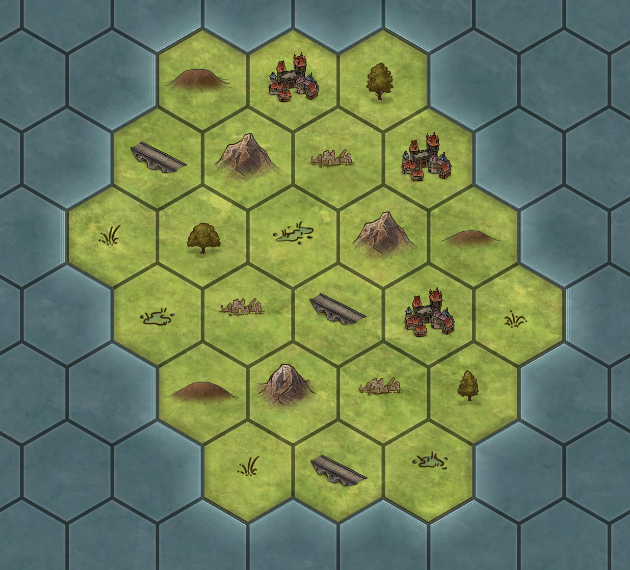|
Copied from a Reddit post I made a while back: https://www.reddit.com/r/Warhammer/comments/uswkoh/working_on_a_mapbased_narrative_campaign_system/ My friends and I have talked many times about running a map campaign using the Age of Sigmar Path to Glory or Warhammer 40k Crusade rules, and unfortunately there are very few resources for setting that sort of campaign up. I started with the standard 3rd edition #AoS PtG rules (I'll get to Crusade eventually) and my goal is to change as little as possible while also adjusting it for a map-based system. I also want to make sure it's as fair and balanced as possible. I found these wonderful printable tiles from @GravenGuild and started churning out hexes that I thought looked cool, and I got inspired to start writing up some ideas. To start, I divided the types of hex tiles I wanted to use into 8 types: Mountains Rivers/Lakes Hills Plains Roads Forests Cities Ruins There are more types, but this was a good place to work from. Then I wrote down all the territory types (excluding faction specific territories) found via exploration in the PtG rules and put them into 2 buckets: 7 Basic territories: Old Keep Forgotten Mine Sacred Site Arcane Waypoint Ancient Roads Small Settlement Wild Lands And 5 Better Territories: Borderlands Realmstone Reserve Wellspring Ruins of Myth Large Settlement I figured that the best way to make this work is to divide the territories across the Hex tiles by type so that certain territories would be found on certain hexes. Then I got all mathy and made a spreadsheet. I chose a number of tiles that won't break the bank in resin costs and that would work for my group of 4-5 friends that will play in the campaign. 24 tiles seemed good, so I balanced everything for that (it's scalable though) The tiny spreadsheet screenshot shows what hex types have what territories on them, and how many of what hexes are in the pile to start, but there should be something to help decide which territory someone gets when exploring any particular tile, so there's a chart... The chart shows what you would get when exploring a tile after rolling a D6. Just like in the PtG exploration, a '1' means you find nothing (this time), and a '6' means you get to choose something (from the territories on the hex) or roll on your faction territory table. The difference between this and the PtG exploration chart is that there are specific things found on certain tiles, rather than being able to find anything on the big list. This is somewhat limiting compared to the RAW, but adds strategy to how you move around the map. Since there are limited spots on the map, it seems appropriate for people to be able to explore a tile again if they don't find something they want the first time, mainly to avoid having an entirely empty map after a lot of bad rolls. Using @inkarnaterpg for the test map, I made an example of how the different tiles can be arranged in a random order over a 24 hex map. If a specific shape or layout strikes your fancy, go for it. I liked the idea that when players are starting (or joining) a PtG map campaign that they get to place down their 'Keep' along the outside edge of the map to represent their forces setting up shop on the outskirts of the lands in question. Play would progress in rounds from there, with players choosing what adjacent tile they wish to attack/explore/ruin/haunt/save and then battles are played as normal for the PtG rules.
Until a player attacks a hex that is already claimed by another player. More to come!
1 Comment
|







 RSS Feed
RSS Feed
